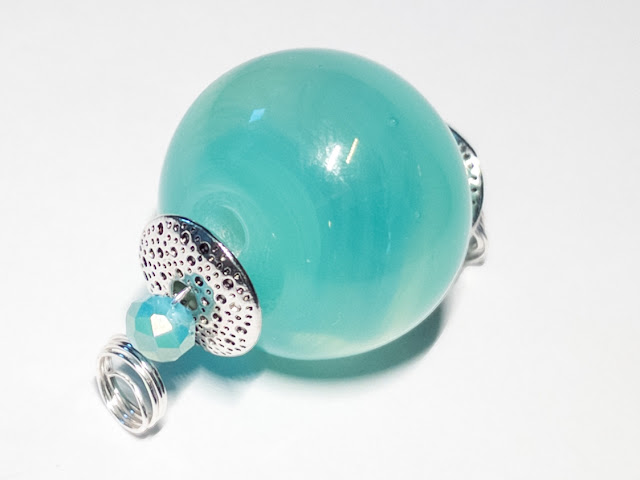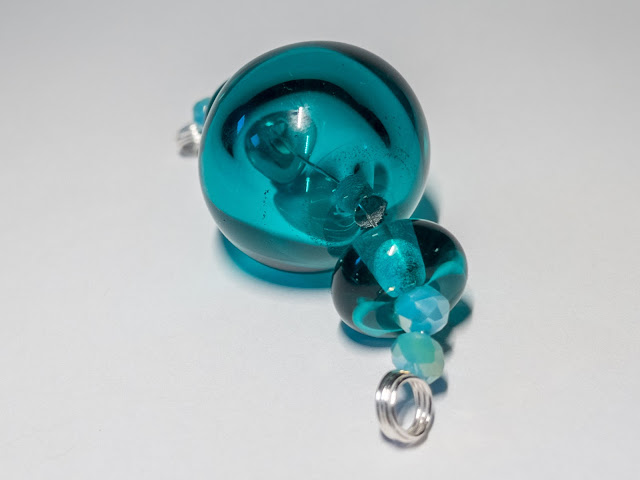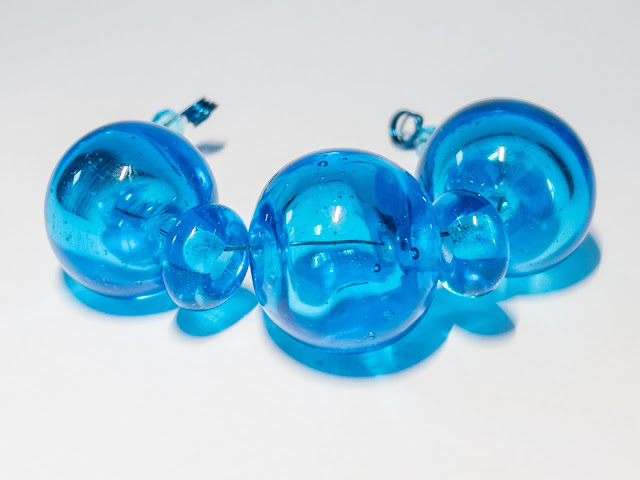Lampwork glass beads are beautiful pieces of art.
One way to add more texture and interest to lampwork beads is to etch them, which means to create a matte or frosted surface on the glass.
There are different methods of etching glass, such as using chemicals, sandblasting, or engraving.
However, one of the easiest and safest ways to etch lampwork beads is to tumble them.
Tumbling is a process of polishing or smoothing objects by placing them in a rotating barrel with abrasive media, such as sand, grit, or ceramic pellets.
The friction and impact of the media against the objects gradually wears away the surface, creating a smooth or shiny finish.
Here is a photo of a recent set of my Love Sonnet beads as they emerged from the kiln. They are nice but I like the etched look for a more romantic presentation. Stay tuned below for the after photo.
If the objects are made of glass, tumbling can also create an etched effect, because the abrasive media removes the glossy layer of the glass and exposes the underlying layer, which has a different refractive index.
This makes the glass look less transparent and more opaque, giving it a soft and velvety appearance.
To tumble etch lampwork beads, you will need a tumbler machine, which can be found online or at some craft stores. I use a Lortone brand that I purchased years ago.
You will also need some abrasive media, such as silicon carbide grit or aluminum oxide pellets. These are available in different sizes and grades, depending on how coarse or fine you want the etching to be. The finer the silicon carbide, the smoother the finish. I recommend using a grade of 800 or 1000 for a silky texture, or a lower grade if you prefer a more rustic look. A google search for suppliers or check Ebay and Etsy for purchasing in small quantities.
You will also need some water and a small drop or two of dish soap to help lubricate the tumbling process.
The first step is to prepare your lampwork beads for tumbling.
Make sure they are clean and dry, and remove any metal findings or wires from them.
You can also sort your beads by size, shape, or color, if you want to have more control over the final result. I do suggest making note of the number of beads going into the tumbler (this will make sense later)
Next, fill the tumbler barrel with your chosen media, about halfway full. Then add your beads, making sure they are not too crowded or too sparse in the barrel. You want enough space for them to move around freely, but not too much that they will bang against each other too hard.
Finally, add enough water to cover the media and beads, and just a few drops of dish soap.
The second step is to start the tumbling process. Turn on the tumbler machine and let it run for several hours depending on how etched you want your beads to be. You can check on them periodically by stopping the machine and rinsing a few beads with water to see how they look.
You can also adjust the amount of water or soap in the barrel if needed.
The tumbling process will create some noise and vibration, so make sure you place the machine on a stable and secure surface, away from pets or children.
The final step is to finish your etched lampwork beads.
Once you are satisfied with the level of etching, turn off the machine and scoop out your beads with a spoon (I keep an older spoon beside my tumbler for each etching session). Rinse your beads thoroughly with clean water and dry them with a soft cloth.
You can also use a toothbrush or a cotton swab to remove any grit or residue from the bead holes or crevices.
Your etched lampwork beads are now ready to be used for your projects!
Here is the tumbled bead set from earlier in the post after being completed.
A sprinkling of my own Pendragonfyre frit blend creates the amazing patterning of colors.
Such a difference the etching makes.
Tumbling is a fun and easy way to etch lampwork glass beads and give them a new look. It is useful to make note when you experiment with different media, tumbling times, and bead combinations to create different effects and styles.
Tumbling is also a safe and eco-friendly alternative to chemical etching, which can be hazardous and harmful to the environment.
With tumbling, you can enjoy the beauty of etched glass without any risks or worries.
If you've found this post useful or interesting, you might want to check out Laura Sparling’s blog on tumbling etching as well as her blog post on “‘Beadswax’ which is an oil and beeswax mixture that she uses to finish tumble-etched beads which gives her beads a lovely glow.
I have checked availability of CIM Candlelight glass as In Stock on Nortel Glass' online shopping cart.
Reach out to Jean or Jennifer at Nortel to add some of these glasses to your next glass order.
#creationismessy
#cimglass
#cimcandlelight
#pendragonfyre
#handmade
#handmadeincanada
@creationismessy
@nortel_glassgirl

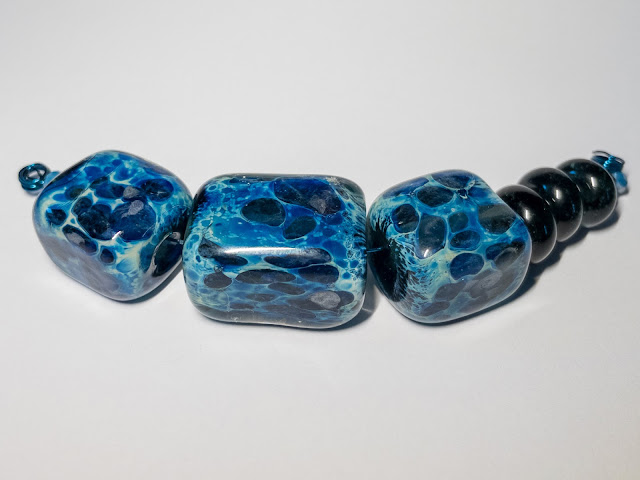
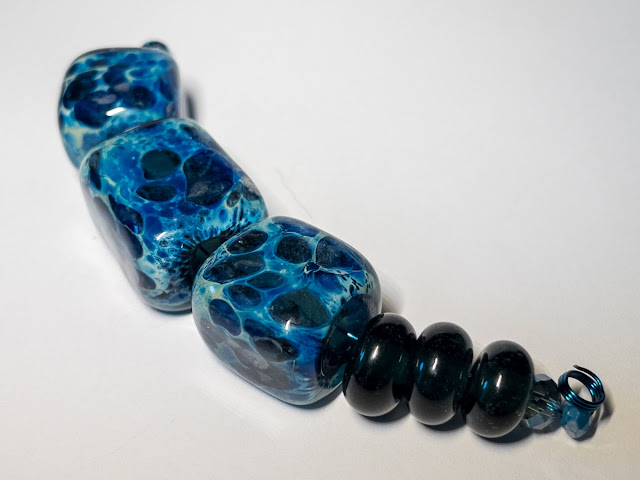
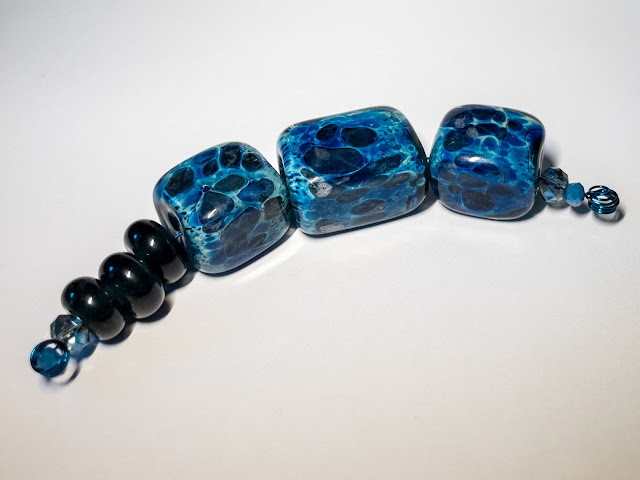

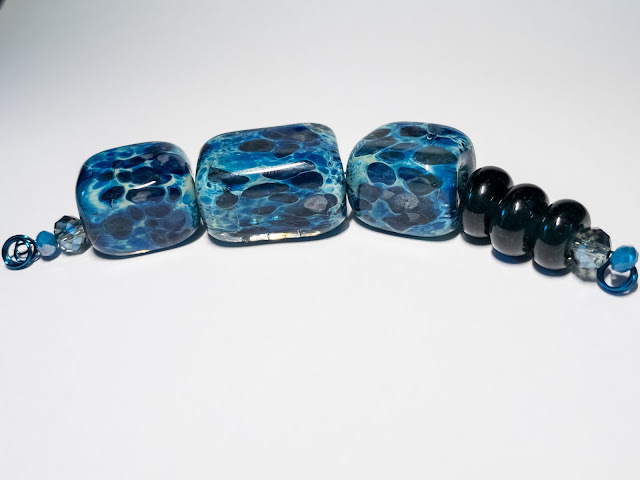






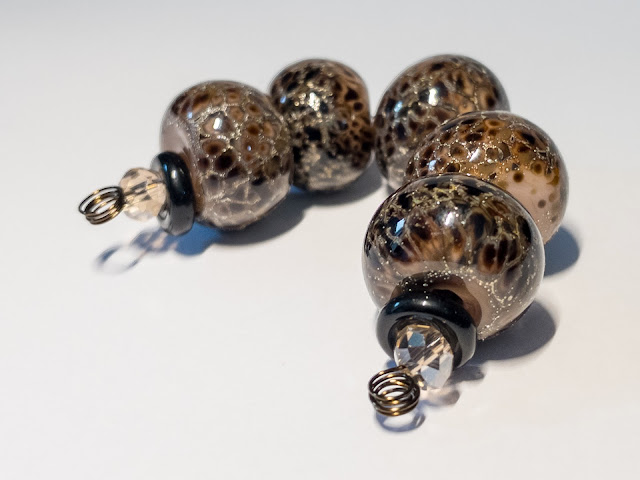


.jpeg)
.jpeg)
.jpeg)

